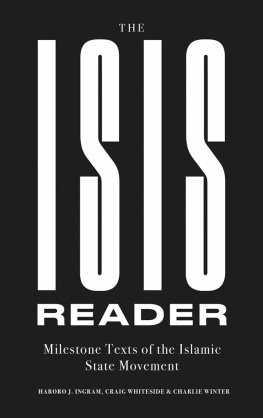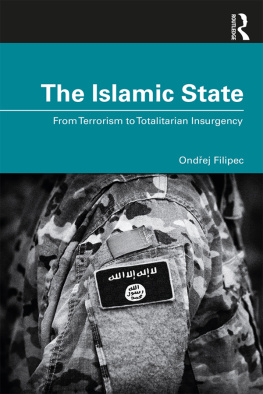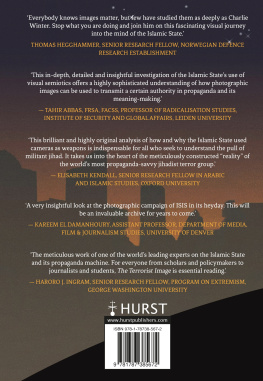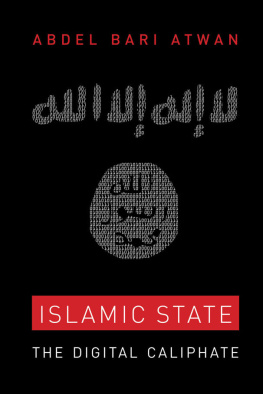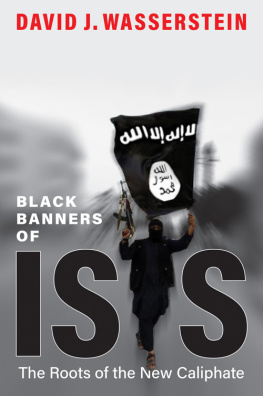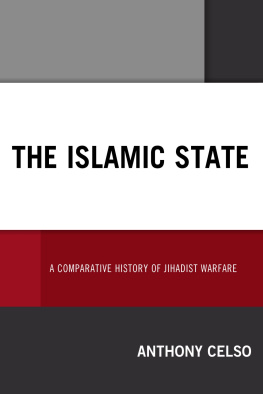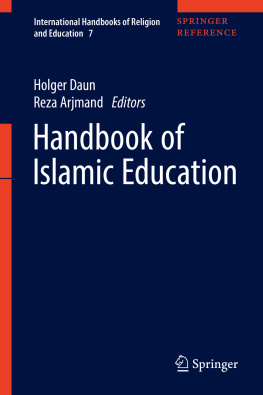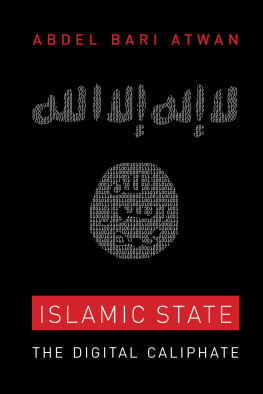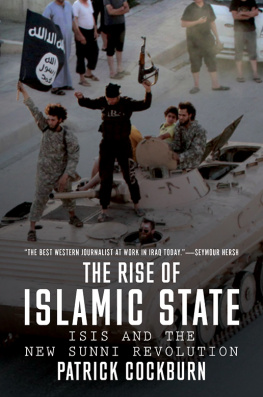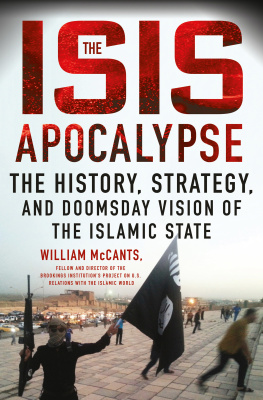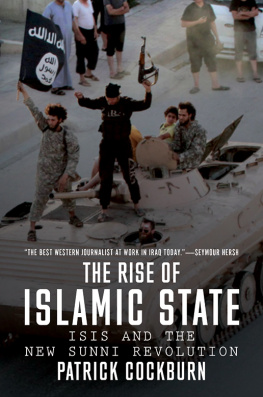THE ISIS READER
HARORO J. INGRAM
CRAIG WHITESIDE
CHARLIE WINTER
The ISIS Reader
Milestone Texts of the
Islamic State Movement
Oxford University Press is a department of the University of Oxford. It furthers the Universitys objective of excellence in research, scholarship, and education by publishing worldwide. Oxford is a registered trade mark of Oxford University Press in the UK and certain other countries.
Published in the United States of America by Oxford University Press 198 Madison Avenue, New York, NY 10016, United States of America.
Haroro J. Ingram, Craig Whiteside and Charlie Winter, 2020
All rights reserved. No part of this publication may be reproduced, stored in a retrieval system, or transmitted, in any form or by any means, without the prior permission in writing of Oxford University Press, or as expressly permitted by law, by license, or under terms agreed with the appropriate reproduction rights organization. Inquiries concerning reproduction outside the scope of the above should be sent to the Rights Department, Oxford University Press, at the address above.
You must not circulate this work in any other form and you must impose this same condition on any acquirer.
Library of Congress Cataloging-in-Publication Data
ISBN 9780197501436 (print)
ISBN 9780197536025 (updf)
ISBN 9780197536087 (epub)
Names: Haroro J. Ingram, Craig Whiteside and Charlie Winter
Title: The ISIS Reader
CONTENTS
PART I
JOIN THE CARAVAN
PART III
THE CALIPHATE
PART IV
PURIFICATION
The authors owe a debt of gratitude to those who have shaped their thinking about the Islamic State phenomenon over the years. As researchers, our thinking has been deeply influenced by scholars and analysts such as Laith Alkhouri, Amarnath Amarasingam, Rasha al-Aqeedi, J.M. Berger, Cole Bunzel, Martha Cottam, Jon Czarnecki, Anas Elallame, Brian Fishman, Mohammed Hafez, Hassan Hassan, Samuel Helfont, Tore Hamming, Ahmed Hashim, Nibras Kazimi, Ginamarie Ligon, Charles Lister, Shiraz Maher, Will McCants, @ Mr0rangetracker, Wassim Nasr, Pieter Van Ostaeyen, Daniele Raineri, Aymenn al-Tamimi, Robert Tomlinson, Karl Walling, and Aaron Zelin. We appreciate the support from Ryan Evans and his War on the Rocks editorial team who published early explorations on our read of the group that inspired chapters in this book. We also owe particular thanks to the International Center for Counter-Terrorism (ICCT) in the Hague who have been a tremendous support to the authors. Special thanks to Dr Alastair Reed who has been a great supporter of our work over the years and continues to work tirelessly to push the field of research and practice forward. During the authors military and national security careers, many fellow practitioners have offered their own insights into the Islamic State movement, helping to shape not only how we understood the movement but how best to confront it. Most importantly, we are grateful to the people from across the Middle East, Africa, Europe, and South and Southeast Asia who have endured the hardships wrought upon them by this movement and shared their insights and experiences with us over countless conversations. Finally, thank you to Hursts Michael Dwyer and Farhaana Arefin for their support and patience throughout the editing process. We are grateful for all of their time and effort.
The Islamic State (also known as ISIS, ISIL, and Daesh ) swept into the global consciousness in 2014 with its daring seizure of territory in Iraq and Syria, before seeming to fade just as quickly back into the deserts from which it allegedly came. From its outset, it has been a source of widespread confusionGeneral Michael Nagata, the US Special Forces commander tasked with countering the group in late 2014, admitted in a moment of candour that he and his command did not understand this movement. Today, after years of bloody conflict concentrated in Syria and Iraq but also stretching across the Middle East, Africa, and Asia, there is still an alarming amount of confusion about its nature, strategy, and ultimate goals. Is it a nihilistic terrorist movement, an apocalyptic death cult, an insurgency, a terrorist army, a proto-state, or some hybrid of the above? Can the roots of this organisation, which seemingly appeared out of nowhere in 2014, really be traced back to the late 1990s, as some say? Or do the various names it has adopted since then actually refer to completely different groups? And is it really driven by Islamic principles, or is it better classified as a Sunni neo-Baathist restoration movement with genocidal proclivities? Confusion is rife within academic and policy circles, so it is hardly surprising that the Islamic State movements various evolutions baffle the uninitiated, with even the most knowledgeable observers to bluring its history and strategy into tortuous catch phrases that distort more than they illuminate.
The purpose of this book is to present the Islamic State movement in its own words, through the texts and speeches that shaped its evolution from the late 1990s through the second decade of the twenty-first century. To assist the reader with understanding this history, we will refer to the group by the name used in the historical period being referenced. However, we use the term Islamic State movement to refer to the phenomenon holistically, encapsulating all of its historical phases and name changes. While many of the speeches and documents that appear in this text were translated from the original Arabic to make them accessible to English-speaking audiences, in many cases the Islamic States propagandists have produced English translations and it is these, wherever possible, that have been used here. This helps to ensure that the inevitable challenges of interpretation during translation reflect the intended meanings of its authors. Where an English-language translation by the Islamic State movement itself was unavailable, the translation was subject to multiple reviews by Arabic-speaking subject matter experts and references to the original Arabic text included in footnotes.
We were motivated to write this book by both our hope of providing some clarity to readers about the historical and strategic nuances of the Islamic State movement and, perhaps more importantly, by a desire to highlight the importance of ensuring that primary sources play a central (but not singular) role in shaping our understanding of violent, non-state political actors. There has too often been a tendency for scholars and policymakers to turn to secondary rather than primary source materials.
Our intent is not to propagandise for this brutal terrorist group. Indeed, we have spent much of our professional careers working in operational, strategic, policy, and advisory roles to confront it in different parts of the world. As such, all of the original source material contained in this book is introduced with explanatory notes and followed by detailed analysis designed to support the readers critical understanding of the sources, which are, more often than not, provided in abridged form with just enough detail for a reasoned understanding of their significance. In doing so, we hope to encourage the research and policy fields to prioritise primary sources to understand violent political movements and devise more effective strategies to undermine and ultimately defeat them. With that in mind, while this book may be of limited value to the hardened researchers and practitioners who have been monitoring and combating this group for over two decades, it was not written for this niche community but rather for a broader readership keen to learn more about this perplexing phenomenon. This said, we have found in our own research that rereading these foundational texts over and over again has helped us gain an understanding of this elusive foe.

